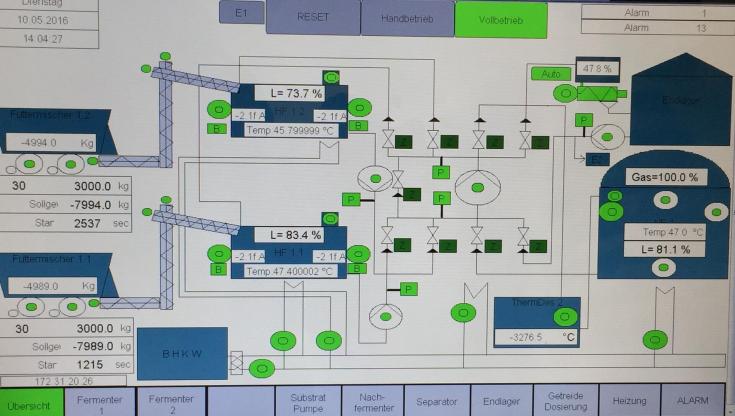Financing and business models for biogas

On 15 June, an online discussion took place as a follow-up activity to the webinar on 'Biogas from Bio-Waste', picking up on the questions asked about financing options and business models for new biogas plants. The specific objectives were to explain the setup and the cost implications of different types of biogas plants and what this means for their business models and financing options.
As separate collection of bio-waste from households becomes mandatory in 2023, a 'new' organic fraction becomes available as input material for biogas plants. Municipalities, as owners of this waste fraction, must decide what shall happen to it. Among the treatment options are biogas and composting, whereas composting is cheaper, but biogas allows to also generate renewable energy, reduce greenhouse gas emissions and creates more local employment, adding more value overall.
Understanding the business model behind new plants helps public authorities to use public funding effectively, not funding entire plants, but only funding enough so that private sector investors have a natural interest in investing in new plants because the economic framework conditions are showing they can make a profit.
Biogas plants that treat municipal bio-waste are more expensive to run than agricultural biogas plants because the input material is usually a bit contaminated with e.g. plastics and must be cleaned prior to anaerobic digestion. Such plants must be financed with a combination of revenue for the treatment of waste (called 'gate fee' and paid per ton of bio-waste treated; payment to be arranged by the municipality as owner of the waste, financed through fees for waste collection from households, and can be co-financed by regional funds under conditions), and a revenue for the sale of renewable gas or renewable electricity and heat.
Regions should start with a potential analysis to assess the available bio-waste and other feedstock for new biogas plants.
Regions should plan for new biogas plants in the entire territory to avoid funding too many plants at once that will later compete for a limited amount of available feedstock.
Potential analysis should carefully distinguish between theoretical potential and realistically achievable volume of separately collected bio-waste, especially when introducing separate collection of bio-waste from households for the first time.
Regional waste management planning and regional renewable energy planning should be integrated, as in Denmark (Min. ENV and Min. ENERGY or the equivalents at regional level should cooperate).
When tendering out biogas plants, municipalities or regions should offer long-term contracts for supply of bio-waste and gate fee and offer long-term uptake agreements for the renewable energy produced (min. 15 years).
Village-level bioenergy plants linked to a district heating supplying the village and local industry with thermal energy is a great concept that combines biogas and heating of buildings. Old oil-based or inefficient coal and biomass-based heatings can be replaced by an energy efficiency district heating using renwable heat from biogas plants. The business model for the distrinct heating should be de-coupled from the busines model of the biogas plant but can be planned together. District heating is economically interesting for villages with 500-1500 inhabitants and becomes cheaper where houses are concentrated or are multi-apartment houses, but it can work even with 10 households connected.
As it is unusual that demand for such village-based biogas plants and new district heating emerges from the villages by itseld, it is advised to use intermediaries to assess the potential and to advice rural municipalities about their options.
Under the cohesion policy of the European Union, regional funds are available to co-finance the construction costs and the operation costs of such new plants that are in line with the new Waste Framework Directive and the Circular Economy Package. Moreover, biogas clusters and the development of commercial products such as fertilisers from biogas production can be supported.
Depending on the region’s socio-economic wealth, co-financing rates vary. But even for more developed regions, public funding is available via the European Regional Development Fund (ERDF). The recently announced recovery fund is making billions of additional money available that must be spent by 2023, with this period’s funding for operational programmes. But biogas plants of all types are also eligible for support in the upcoming period (2021-2027) and should be considered by programming committees for the next general generation of regional, national and cross-border programmes right now.
The presentations are available below
- by Astrid Severin, Thematic Expert of environment and resource efficiency.Document
- by Katharina Krell, Thematic Expert of low-carbon economy.Document
- by Volker Kromrey, Programme Director Energy Transition of Bodensee Stiftung / Lake Constance FoundationDocument
- by Thorsten Kohlisch, Policy Learning Platform project manager.Document
Other resources
- Watch the webinar on biogas from organic waste
- Policy brief on
- Policy brief on supporting local bioenergy development
- Access the Danish waste and bioenergy strategy
